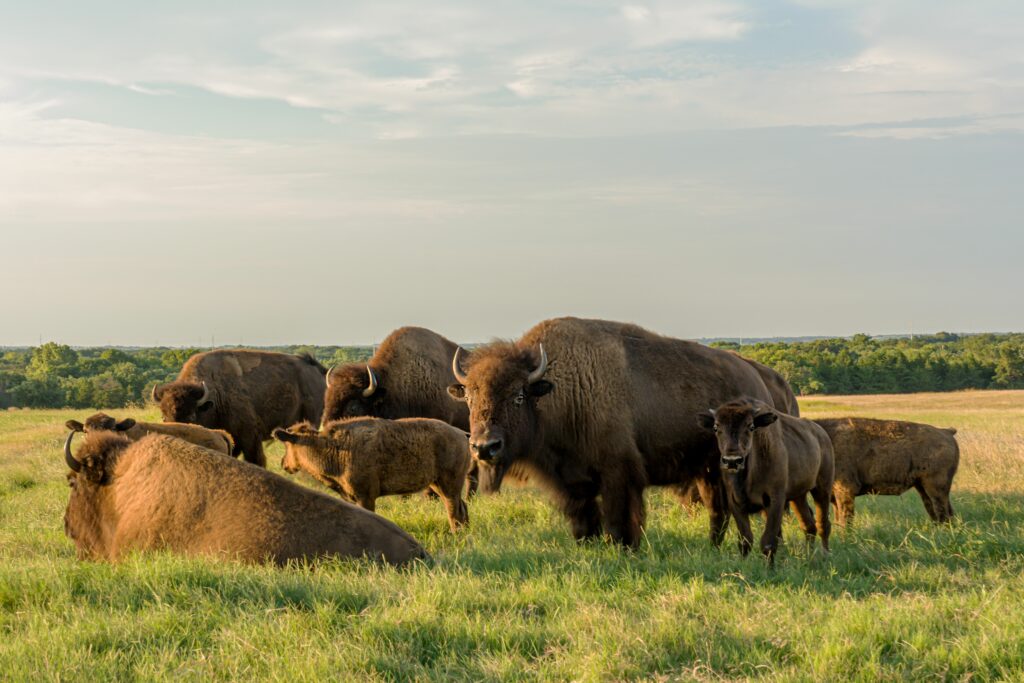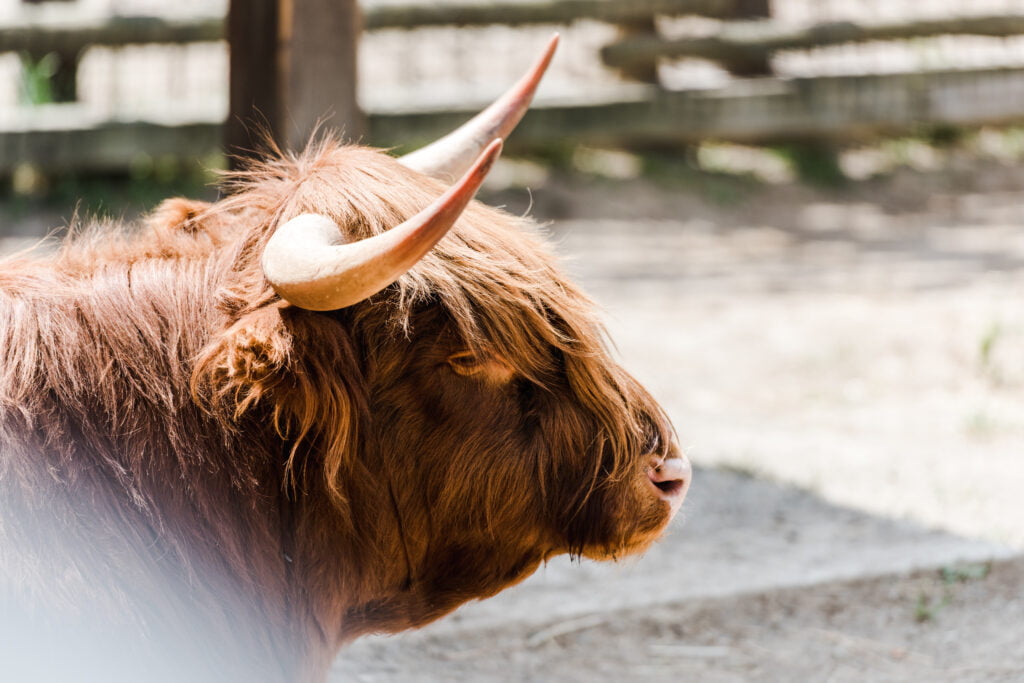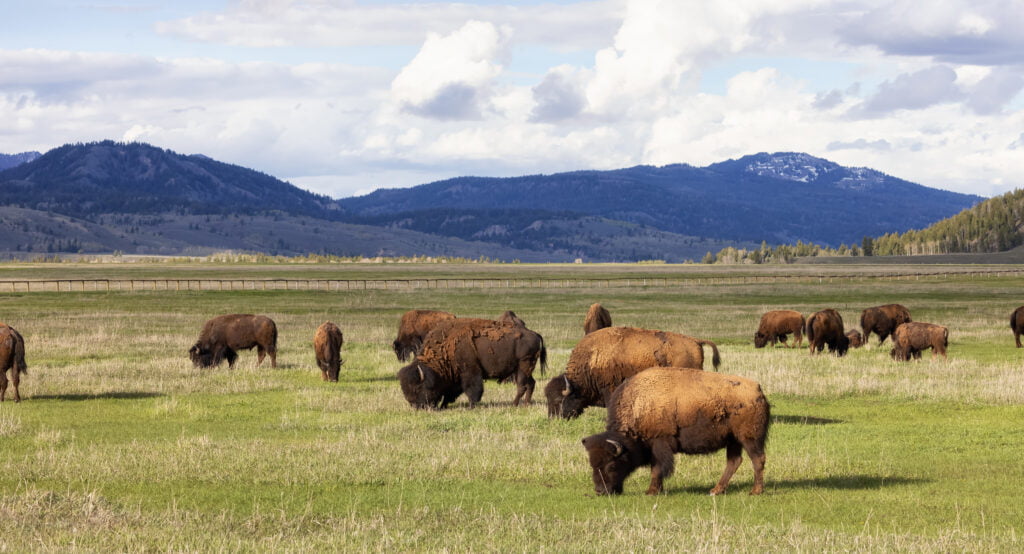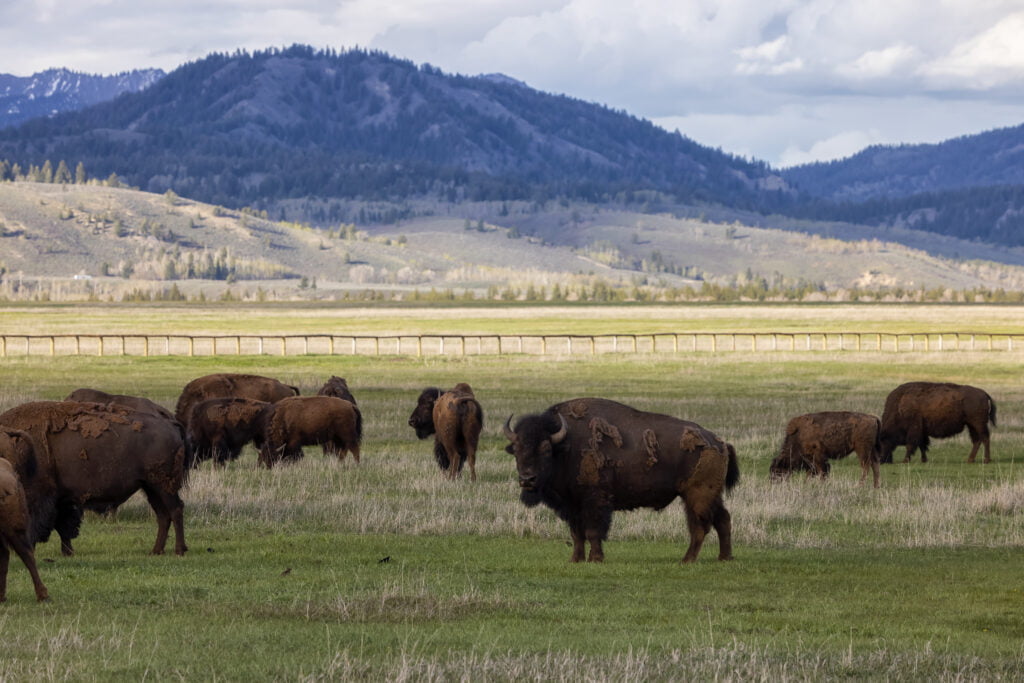The American Bison: 12 Remarkable Facts and Their Conservation Journey

The American bison, commonly known as the buffalo, is an icon of the American West. These majestic mammals once roamed the plains in massive herds but were nearly driven to extinction in the late 1800s. Thanks to conservation efforts, bison have made a comeback and can once again be seen grazing on grasslands across North America.
Bison are not only integral to the prairie ecosystem but also have great cultural significance for Native American tribes. From their unique physical features to their role in history, bison are truly remarkable animals. Read on to learn 12 fascinating facts about these gentle giants.
1. Bison Are the Largest Land Mammal in North America

The American bison is the largest mammal found in North America today and one of the largest remaining mammals in the world.
Due to their massive size and imposing horns, bison have few natural predators aside from wolves and bears. Their size enabled them to survive the harsh winters and storms of the Great Plains.
2. Bison Can Reach Speeds Up to 40 mph
Despite their bulk, bison are surprisingly quick on their feet. When needed, they can run at speeds up to 40 miles per hour.
This burst of speed allows them to escape predators or aggressively charge when threatened. Their agility is also shown by their ability to jump over obstacles up to 6 feet high.
So don’t let their lumbering appearance fool you – bison can turn on the speed when they want to. It’s no wonder bison are nicknamed “thundering giants of the prairie.”
3. They Have a Distinctive Hump on Their Shoulders
The large hump located above a bison’s shoulders is one of its most characteristic features. This hump is formed by the animal’s massive shoulder muscles.
Having this hump gives bison several advantages:
So this unique shoulder hump serves important functions for bison survival on the plains.
4. Both Males and Females Have Horns

Many people are surprised to learn that both male and female bison grow horns. The horns begin to grow when bison reach 2 years old.
Since the horns look quite similar, it can be tricky figuring out a bison’s gender without a close inspection. Just remember – the ladies have horns too!
5. Their Coat Provides Insulation Against Cold
Bison have a thick, shaggy winter coat that enables them to survive frigid temperatures down to -40° F. This coat is made up of two layers:
Bison shed this heavy coat each spring. Without it, they would overheat in the summer months. Their amazing adaptability allows them to thrive year-round in harsh plains environments.
6. Calves Are Born Reddish-Orange
Bison mate from late July through September. After a 9-month gestation, new calves are born from April to June.
When bison calves are born, their hair has a distinctive reddish-orange hue. This coloration led to their endearing nickname of “red dogs.”
Over the first 4 months of life, the calf’s hair gradually darkens to the brown of mature bison. By their first winter, calves have grown the shaggy coat to match the adults.
7. Bison Wallow in Dust for Grooming

Bison have a fun habit of rolling in dust, dirt, and mud – known as wallowing. They do this for a couple of reasons:
So don’t be surprised to see bison looking a muddy mess – they’re just taking a dust bath!
8. They Were Nearly Hunted to Extinction
Bison once numbered in the tens of millions, perhaps up to 60 million, in North America. But excessive hunting in the 1800s nearly wiped them out completely.
By the 1880s, there were fewer than 1,000 bison left. But conservation efforts allowed the species to gradually recover. There are now 500,000 bison in North America.
9. Yellowstone Has the Only Continuous Bison Herd

Most bison today are raised as livestock, but Yellowstone National Park has the distinction of being the only place where bison have lived continuously since ancient times.
Some key facts about Yellowstone’s bison herd:
10. Bison Helped Shape the Prairie Ecosystem
As a keystone species, bison were, and still are, essential to the overall health of the Great Plains grasslands. Their grazing and movement habits provided several ecological benefits:
So although their numbers are reduced, bison continue to positively shape prairie landscapes.
11. Native Americans Revere Bison Spiritually
For thousands of years, Native American tribes of the Great Plains relied on every part of the bison for food, clothing, tools, shelter, and weapons. Bison were at the center of daily life and tribal culture.
Beyond physical survival, bison hold symbolic and spiritual meaning for many tribes:
So the near loss of bison dealt not just a material blow, but a painful cultural and spiritual loss for Native peoples. Their return has brought renewed hope.
12. Conservation Efforts Have Brought Them Back from the Brink

From millions to hundreds, and now numbering around half a million, the American bison has gone through a turbulent history. Their comeback can be credited to determined conservationists.
Key events in bison preservation include:
Ongoing ecological restoration and species education continue to secure the bison’s future.
Key Takeaways
The American bison’s power, adaptability, and integral role in our national heritage make them truly remarkable creatures. Their enduring symbolism and continued conservation serve as inspirations for future wildlife protection.





